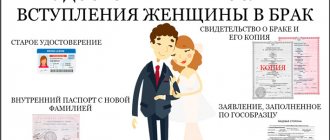In judicial practice, the limitation period for road accidents is considered as general or special. Depending on the nature and consequences of the accident (damage to property, injuries of varying severity or death of participants), it may vary in one direction or another.
The general term refers to the standard period, which is 3 years and is classic in most cases of road accidents. This applies to situations when we are talking about claims against the direct culprit. If we talk about filing a claim against an insurance company, in this case the current limitation period is only 2 years. The countdown begins 1 month from the date the claim was sent to the insurer or from the date the applicant received a written refusal from this insurer. But at the same time, the statute of limitations for claims from the insurance company against the culprit of the accident is the same 3 years.
The special period may be increased or decreased, but does not exceed 15 years, unless the matter is terrorism. It all depends on the nature of the consequences of the accident.
What statute of limitations will be established for an accident against the culprit directly depends on whether we are interested in the moment of the offense committed or the date when the offender was notified of his crime of legal norms. Therefore, this period is divided into:
- The deadline for directly bringing the perpetrator to administrative responsibility. This period is only 3 months and is intended to find the culprit. If he is not found during this time, the case is terminated due to the expiration of the period for involvement.
- The period allowing for the recovery from the perpetrator of material compensation for damages in an accident for one or another harm caused to the health or property of the injured party. That is, we are talking about bringing to civil liability and the entire period in this case ranges from 3 to 10 years.
Statute of limitations - what is it?
Russian legislation clearly defines the time frame when an injured party can file a statement of claim with the court in order to consider its complaint and receive compensation or restore infringed rights - this is the “Limitation Period (LS)”, as discussed in Art. 196 of the Civil Code of the Russian Federation and is determined by three years. Article 200 of the same code indicates that the IDA begins its countdown from the moment when the rights of the injured person were violated.
However, in the case of consideration of cases of road accidents, it is necessary to take into account this point: all cars must have a compulsory motor liability insurance policy, therefore the limitation periods are also regulated by special regulations - Art. 966 of the Civil Code of the Russian Federation (chapter “Insurance”).
Limitation period for accidents without injuries.
Incidents of this kind are among the most common, therefore judicial practice is based on the above-mentioned regulations of the Civil Code of Russia.
However, depending on the type of insurance for cars involved in an accident, Article 966 of the Civil Code of the special section on insurance determines the following terms:
- OSAGO – the statute of limitations is exactly 3 years from the date of payment of compensation;
- CASCO-SID is only 2 years from the date (day, month, year) of compensation for damage by the insurance company.
Those motorists who also turned to independent experts to assess the extent of the damage can count the statute of limitations (i.e., the moment their rights were infringed) from the day the official conclusion of the independent expert was received.
Attention! The maximum payment amount under compulsory motor liability insurance is 400 thousand rubles (if only the vehicle is damaged) and 500 thousand rubles (when there are victims, including fatalities). If the damage to the car exceeds the specified amount, the injured party can file a claim with the person responsible for the accident to compensate for the missing amount of damage. The LED for such applications is also 3 years.
Terms of compensation for damages under the law
From April 1, 2021, amendments were made to the law regulating the timing of payment of compensation for damage caused under compulsory motor liability insurance. According to them, car repairs are now provided instead of monetary compensation. However, this only applies to policies that were issued no later than April 28, 2021. For policies issued earlier than this date, the procedure for compensation for damage remains the same, that is, monetary compensation is provided.
According to the Federal Law “On Compulsory Motor Liability Insurance”, the period of insurance payment under Compulsory Motor Liability Insurance is 20 calendar days from the date of submission of all relevant documents. The only exceptions are holidays, that is, days that are officially non-working. Regular weekends do not fall into this category.
What else to read:
- My car was scratched in the yard, what should I do?
- Europrotocol 2021
- How to get money instead of repairs under compulsory motor liability insurance: a detailed review
Insurance company specialists often claim that the countdown of 20 calendar days begins from the moment the car is inspected, but this is illegal. In fact, the countdown starts from the moment all documents are delivered to the IC specialists.
To begin the production process for insurance payments, you need to prepare the following documents:
- application for insurance compensation for damage;
- the decision of the traffic police, which was made to other participants in the road accident;
- document confirming the fact of the accident;
- PTS or SoRTS;
- notification and accident;
- OSAGO insurance policy.
In cases where cash payments are exchanged for vehicle repairs, there are two types of it: damaged car parts are exchanged for new ones or replaced with serviceable, but already used ones. In such a combination of circumstances, it is necessary to clarify what repairs will be made to the vehicle damaged in the accident.
Limitation periods for road accidents in the presence of victims.
Unfortunately, accidents are also common, as a result of which drivers, passengers or even pedestrians can be injured, incl. and incompatible with life:
- Damage to health is caused - if the injured party received one or another injury as a result of an accident and survived, then the statute of limitations is 3 years (according to the nine hundred and sixty-sixth article of the Civil Code of the Russian Federation);
- If a fatal accident occurs, then the SID is also regulated by Article 966 of the Civil Code and ranges from three to 10 years.
Claim against insurance company
In addition to filing a claim with the judicial authorities against the direct initiator of the accident, there are cases when the victim does not agree with the actions of the insurance company of the culprit. This is possible in the following situations:
- payment by the insurance company of an incomplete amount of compensation;
- refusal to provide insurance to compensate for damage caused by their client.
And here it is worth explaining that the statute of limitations for resolving disputes with insurers is somewhat lower than in other cases. This is only 2 years.
The limitation period is calculated from the moment of occurrence of the grounds for recording the insured event. This fact will need to be proven in court by providing a traffic police report, European protocol or other paper.
The limitation period for claims related to disputes in the field of traffic accidents is practically no different from the standard periods. The period is 3 years. However, in the presence of special circumstances, the period can be extended or, conversely, shortened. In any case, do not forget that the best time to file a claim against the culprit of the accident is within the period established by the Civil Code of the Russian Federation. Otherwise, it will be necessary to prove the existence of valid reasons that act as an obstacle to compliance with the law.
Limitation periods in the absence of a compulsory motor liability insurance policy.
Despite the fact that the presence of an MTPL policy is mandatory for cars registered in the Russian Federation, situations also arise when the culprit of an accident is a vehicle without compulsory insurance. A striking example of this is the expired MTPL insurance policy of the car owner.
In this case, the subrogation process starts, i.e. the rights of the policyholder are transferred to the insurer for compensation for damage due to an accident (in accordance with Article 965 of the Civil Code of the Russian Federation).
If the culprit of the accident does not have a compulsory motor vehicle liability insurance policy, the MTPL begins its countdown from the date of the accident (i.e., from the moment the insured event occurs) and is exactly 3 years.
Limitation periods for compensation for moral damages.
Not every pedestrian injured in an accident has an insurance policy that will provide monetary compensation in the event of harm to health or life. Such participants in a traffic accident cannot count on payments from the insurance company of the car involved in the same accident.
Therefore, the injured pedestrian can file a claim in court only for the purpose of compensation for moral damage. According to the general law (Chapter 12 of the Civil Code of the Russian Federation), the statute of limitations for compensation for moral damage is the same 3 years.
Attention! If moral damage is associated with causing harm to health, then the very concept of SID for filing a claim in court by an injured pedestrian is absent, which is regulated by Article 208 of the Civil Code of the Russian Federation).
Limitation period as applied to the consequences of an accident
If the statute of limitations has passed, this is not yet a reason to refuse to accept the statement of claim. The court does not have the right to pay attention to the exceeding of the statute of limitations when filing an application; this must be done by the defendant. He is obliged to inform that the period provided for by law has ended, therefore the plaintiff’s demands cannot be considered legitimate.
Consequently, there is no way for the person at fault to attend court hearings, because the case can be considered without taking into account the statute of limitations. It is enough to draw the judge’s attention to this fact just once, and the case will most likely be closed immediately.
Limitation periods for an insured event by way of recourse.
Recourse (reverse order) is a process when an insurance company files a claim against its client who caused an accident.
How does it work? According to the MTPL principle, the insurance company of the person responsible for the car accident is obliged to compensate the injured car owner for the damage caused - this is how the MTPL law works, according to which the insurance company is the guarantor of receiving compensation.
On the other hand, this office may demand from its client in court to reimburse these expenses for the insured event by way of recourse. Article 76 of the “Rules on Compulsory Motor Liability Insurance” clearly states that the statute of limitations in this case is 3 years from the date of the traffic accident in question.
Some unscrupulous insurers take advantage of the inattention and ignorance of the laws of their clients and file claims against them by way of subrogation to compensate the company's funds.
However, the same “Rules on OSAGO” name only specific cases when the insurance company has the legal right to personally demand compensation from the culprit of the accident in the reverse order:
- The driver who caused the accident was in a state of altered consciousness at the time of the incident as a result of the influence of alcohol and drugs;
- The culprit does not have a driver’s license or its validity has expired (the license must be renewed every 10 years);
- At the time of the accident, the driver was a citizen who did not have a power of attorney to drive the specified vehicle;
- During the accident, the car was driven by a driver whose details were not included in the MTPL insurance policy (does not apply to “open” type insurance);
- The culprit of the accident did not remain at the scene of the accident, but hastily left (or ran away);
- The car owner provoked the accident out of selfish intent.
How to punish the culprit if the deadline has passed
Article 27.1 of the Code of Administrative Offenses contains a resolution that the court, within a fifteen-day period, considers the protocol on an administrative or criminal offense.
Also, within three days after the hearing of the case, the perpetrator of the traffic accident is sent a summons, which indicates the date and time of the upcoming court hearing.
After the meeting, the culprit is given a ten-day period to appeal the decision of the judicial authority in a higher court.
This happens when, for unforeseen reasons, the at-fault motorist does not receive a notice to appear in court, and the statute of limitations expires.
If the failure of the culprit to appear at the court hearing was due to the negligence of third parties, then the court has the authority to restore this period in order to protect the rights of citizens injured in road accidents.
Then the countdown begins from the moment of the court decision on the case, and not when it will be executed.
Compensation for damage caused to the property or life of victims, according to court regulations, may be required within a three-year period.
If it has expired, then there can be no talk of non-payment of material or moral damages.
Thus, it is clear that each case is considered individually, because it has its own characteristics and has its own statute of limitations.
And the injured party should not forget about them in order to achieve the protection of their rights and interests.
It should also be remembered that when the period has expired, the culprit cannot be blamed for the incident. The legislation does not provide for any measures for it.
Exceptions may be cases if he did not receive court notifications due to the fault of third parties, or if during these years he was not at the place of his state registration.
The statute of limitations is a concept that is widely used in judicial practice. It is provided in order to protect the rights and interests of citizens who have become victims of a road accident.
The statute of limitations for each category of consequences is determined by the Criminal Code of the Russian Federation: the more complex the crime, the longer the period for filing a claim in court against the culprit of the road accident.
For example, for road accidents with minor injuries, two years are provided, for medium ones - six years, for severe ones - ten years, and in case of death of one or more victims - as much as fifteen years.
In order to defend their right and receive legal and financial protection, participants in the situation on the road should not forget about the existence of these deadlines, because after their expiration it will not be possible to legally punish the culprit.
Is insurance paid to the culprit of the accident under compulsory motor liability insurance? If the driver was drunk, is insurance paid to the culprit of the accident under compulsory motor liability insurance? See the page for joint and several liability in case of an accident. Find out what to do if you are a witness to an accident from this information.
How to avoid becoming a victim of an unfair decision regarding an insurance event?
Lack of resignation to the dishonest work of insurance companies and the biased attitude of other participants in an accident is the key to protecting your legal rights!
Also try to follow the tips below to protect yourself in the previously mentioned controversial situations:
- When applying for an MTPL or CASCO policy, always carefully check that the insurance agent has filled out all the necessary documents completely. Be sure to read the full terms and conditions of the insurance and ask for clarification on any unclear points.
- Follow the traffic rules to avoid not only consideration of cases under recourse for an insured event, but also human casualties in general.
- Never trust your car without special documentation to other people, especially those who may ignore traffic rules.
- Never leave the scene of an accident.
- Try to follow the “Three D” rule; allow pedestrians to pass even in places where they are not allowed to cross.
- Never delay the timing of independent examinations. Don't wait until the deadline to file your claim.
- If it is impossible to go to court in person, issue a power of attorney to a reliable person (lawyer). Just turning to legal specialists when starting litigation is already 80% of the victory!
Situations when filing a claim in court is delayed
There are several popular situations when filing a claim in court is delayed indefinitely. Here are the main ones:
The insurance company refuses to pay
Often insurance companies delay the payment process, citing various bureaucratic problems, lack of documents or their incorrect execution. There are situations, although less frequently, when the management company is embarrassed by the presence of a European protocol in an accident case - unscrupulous companies trying to get money make them look like almost a fraudster. Take this into account and seek legal help if you do not know how to correctly file claims with the insurance company. And remember that the absence or presence of a European protocol should not be an obstacle to receiving compensation under a compulsory insurance policy after an accident.
The culprit without a policy
Another variant of the situation is when a claim is not filed in court immediately and you then have to find out what period of validity of the accident is possible for legal proceedings. The situation could be even worse - for example, the drivers agreed on the spot, and undetected problems with the car became known only after a while. Although in such a situation the chances of recovering damages are minimal.
The damage is too great
If the accident is serious, then MTPL’s ability to cover the damage may not be enough. Often car owners wait for a decision from the insurance company and the final settlement, time passes and it turns out that they will have to sue the person at fault for the accident for recovery of damages in excess of the payment under compulsory motor liability insurance.
The insurance company demands money
New rules for calculating payments under compulsory motor liability insurance have led to the fact that the culprit often receives claims from the insurance company for payment of material damage. A letter of demand may take quite a long time to arrive, and the car owner has to analyze the details of the accident in the European protocol and try to sort out the situation through the court.










